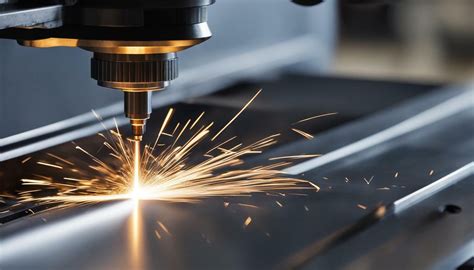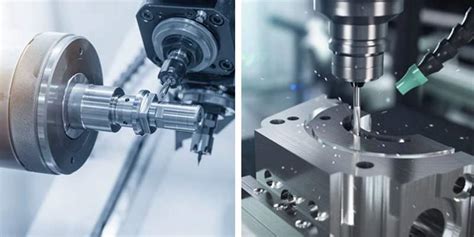cnc turning and milling parts processing What is the difference between CNC milling and CNC turning? CNC milling and CNC turning are distinct machining processes, primarily differing in how they shape workpieces. CNC milling involves a stationary workpiece . Our experts manufacture any turning parts & screw machine parts needed to run your business. With the capacity to machine precision turned parts extremely quickly & accurately, P4W automatic precision machining is your 'one stop shop' for all your turning parts & custom machined parts requirements.
0 · milling pros and cons
1 · milling advantages and disadvantages
2 · mill turn vs cnc machine
3 · disadvantages of milling
4 · disadvantages of cnc milling
5 · cnc milling for beginners
6 · cnc machining pros and cons
7 · cnc horizontal milling for dummies
Precision CNC Machining Parts Service & Custom CNC Machined Parts Manufacturer. Bergek CNC is good at making prototypes, small-batch, or mass-production customized CNC machined parts. Come to get instant quotes on metal and plastic machined parts.
CNC milling and turning are two fundamental types of machining, but they utilize very different processes. This article examines the distinctions between CNC milling and turning, including how each method works, their .CNC Turning: Turning is ideal for creating cylindrical or rotationally symmetrical parts, such as shafts, tubes, and discs. CNC Milling: Milling is versatile and can produce a wide range of shapes, including flat surfaces, contours, pockets, .
What is the difference between CNC milling and CNC turning? CNC milling and CNC turning are distinct machining processes, primarily differing in how they shape workpieces. CNC milling involves a stationary workpiece .

Milling and turning are distinct machining processes that differ primarily in their approach to material removal and the types of parts they produce. In turning, the workpiece rotates against a stationary cutting tool, . CNC turn milling tap. Turn milling is an advanced machining method that ingeniously combines two primary machining processes: turning and milling. This union creates a dynamic approach to crafting complex .
CNC milling uses rotary cutters and perpendicular motion to remove material from the face of the workpiece, while CNC drilling and turning allows engineers to create holes and shapes into the blank with precise diameters . Turning is a machining process where a cutting tool, typically a non-rotary tool bit, moves linearly while the workpiece rotates. This process is primarily used to create cylindrical .
milling pros and cons
While turning focuses on creating cylindrical parts using single-point cutting tools and CNC lathes, milling is more versatile, producing complex parts with intricate features using milling cutters and CNC mills.

CNC milling and turning are two precise methods of machining different materials. However, they have differences in their working, tooling mechanism, applications, and shape creation capabilities. Thus, CNC Milling . CNC milling and turning are two fundamental types of machining, but they utilize very different processes. This article examines the distinctions between CNC milling and turning, including how each method works, their capabilities and limitations.
CNC Turning: Turning is ideal for creating cylindrical or rotationally symmetrical parts, such as shafts, tubes, and discs. CNC Milling: Milling is versatile and can produce a wide range of shapes, including flat surfaces, contours, pockets, slots, and intricate 3D geometries.
What is the difference between CNC milling and CNC turning? CNC milling and CNC turning are distinct machining processes, primarily differing in how they shape workpieces. CNC milling involves a stationary workpiece and a rotating cutting tool that removes material to create complex shapes.
milling advantages and disadvantages
Milling and turning are distinct machining processes that differ primarily in their approach to material removal and the types of parts they produce. In turning, the workpiece rotates against a stationary cutting tool, typically creating .
Turning and milling are two distinct machining processes used in manufacturing, each with its own unique characteristics and applications. Turning involves rotating the workpiece while a single-point cutting tool removes material to create cylindrical parts. CNC turn milling tap. Turn milling is an advanced machining method that ingeniously combines two primary machining processes: turning and milling. This union creates a dynamic approach to crafting complex components with enhanced efficiency and precision.
CNC milling uses rotary cutters and perpendicular motion to remove material from the face of the workpiece, while CNC drilling and turning allows engineers to create holes and shapes into the blank with precise diameters and lengths. Turning is a machining process where a cutting tool, typically a non-rotary tool bit, moves linearly while the workpiece rotates. This process is primarily used to create cylindrical parts by removing material from the external surface of a rotating workpiece.
While turning focuses on creating cylindrical parts using single-point cutting tools and CNC lathes, milling is more versatile, producing complex parts with intricate features using milling cutters and CNC mills. CNC milling and turning are two precise methods of machining different materials. However, they have differences in their working, tooling mechanism, applications, and shape creation capabilities. Thus, CNC Milling Vs CNC Turing is worth a comparison to choose which fits your machining requirements.
CNC milling and turning are two fundamental types of machining, but they utilize very different processes. This article examines the distinctions between CNC milling and turning, including how each method works, their capabilities and limitations.CNC Turning: Turning is ideal for creating cylindrical or rotationally symmetrical parts, such as shafts, tubes, and discs. CNC Milling: Milling is versatile and can produce a wide range of shapes, including flat surfaces, contours, pockets, slots, and intricate 3D geometries. What is the difference between CNC milling and CNC turning? CNC milling and CNC turning are distinct machining processes, primarily differing in how they shape workpieces. CNC milling involves a stationary workpiece and a rotating cutting tool that removes material to create complex shapes. Milling and turning are distinct machining processes that differ primarily in their approach to material removal and the types of parts they produce. In turning, the workpiece rotates against a stationary cutting tool, typically creating .
mill turn vs cnc machine
Turning and milling are two distinct machining processes used in manufacturing, each with its own unique characteristics and applications. Turning involves rotating the workpiece while a single-point cutting tool removes material to create cylindrical parts. CNC turn milling tap. Turn milling is an advanced machining method that ingeniously combines two primary machining processes: turning and milling. This union creates a dynamic approach to crafting complex components with enhanced efficiency and precision.

CNC milling uses rotary cutters and perpendicular motion to remove material from the face of the workpiece, while CNC drilling and turning allows engineers to create holes and shapes into the blank with precise diameters and lengths. Turning is a machining process where a cutting tool, typically a non-rotary tool bit, moves linearly while the workpiece rotates. This process is primarily used to create cylindrical parts by removing material from the external surface of a rotating workpiece. While turning focuses on creating cylindrical parts using single-point cutting tools and CNC lathes, milling is more versatile, producing complex parts with intricate features using milling cutters and CNC mills.
distribution code 2 in box 7 of 1099-r
distribution code 1 and 3 in box 7 of 1099-rcode
eMachineShop manufactures low-cost prototype and production runs of custom parts. Get a fast quote or design and order your parts with our free CAD software. We offer CNC Milling and Turning, Sheet Metal Fabrication, Injection Molding, .
cnc turning and milling parts processing|cnc milling for beginners